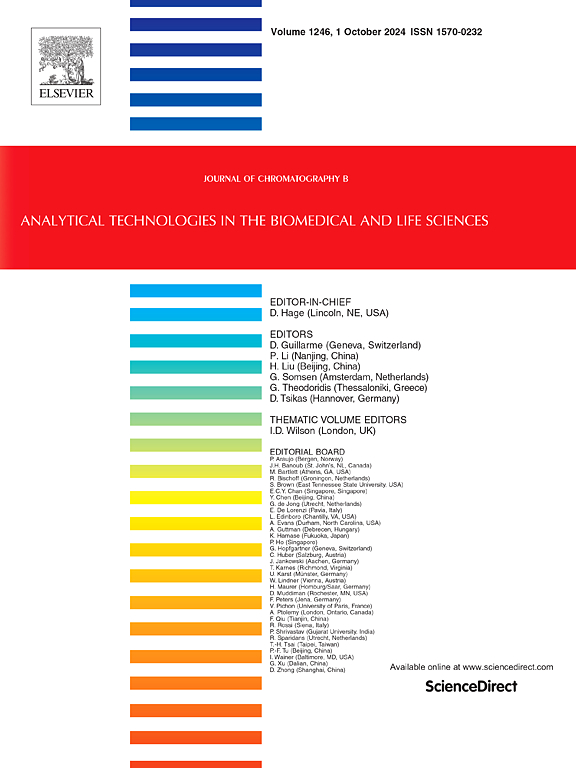Leveraging HILIC/ERLIC separations for online nanoscale LC-MS/MS analysis of phosphopeptide isoforms from RNA polymerase II C-terminal domain
IF 2.8
3区 医学
Q2 BIOCHEMICAL RESEARCH METHODS
引用次数: 0
Abstract
The eukaryotic RNA polymerase II (Pol II) multi-protein complex transcribes mRNA and coordinates several steps of co-transcriptional mRNA processing and chromatin modification. The largest Pol II subunit, Rpb1, has a C-terminal domain (CTD) comprising dozens of repeated heptad sequences (Tyr1-Ser2-Pro3-Thr4-Ser5-Pro6-Ser7), each containing five phospho-accepting amino acids. The CTD heptads are dynamically phosphorylated, creating specific patterns correlated with steps of transcription initiation, elongation, and termination. This CTD phosphorylation ‘code’ choreographs dynamic recruitment of important co-regulatory proteins during gene transcription. Genetic tools were used to engineer protease cleavage sites across the CTD (msCTD), creating tryptic peptides with unique sequences amenable to mass spectrometry analysis. However, phosphorylation isoforms within each msCTD sequence are difficult to resolve by standard reversed phase chromatography typically used for LC-MS/MS applications. Here, we use a panel of synthetic CTD phosphopeptides to explore the potential of hydrophilic interaction and electrostatic repulsion hydrophilic interaction (HILIC and ERLIC) chromatography as alternatives to reversed phase separation for CTD phosphopeptide analysis. Our results demonstrate that ERLIC provides improved performance for separation of singly- and doubly-phosphorylated CTD peptides for sequence analysis by LC-MS/MS. Analysis of native yeast msCTD confirms that phosphorylation on Ser5 and Ser2 represents the major endogenous phosphoisoforms. We expect this methodology will be especially useful in the investigation of pathways where multiple protein phosphorylation events converge in close proximity.
求助全文
约1分钟内获得全文
求助全文
来源期刊

Journal of Chromatography B
医学-分析化学
CiteScore
5.60
自引率
3.30%
发文量
306
审稿时长
44 days
期刊介绍:
The Journal of Chromatography B publishes papers on developments in separation science relevant to biology and biomedical research including both fundamental advances and applications. Analytical techniques which may be considered include the various facets of chromatography, electrophoresis and related methods, affinity and immunoaffinity-based methodologies, hyphenated and other multi-dimensional techniques, and microanalytical approaches. The journal also considers articles reporting developments in sample preparation, detection techniques including mass spectrometry, and data handling and analysis.
Developments related to preparative separations for the isolation and purification of components of biological systems may be published, including chromatographic and electrophoretic methods, affinity separations, field flow fractionation and other preparative approaches.
Applications to the analysis of biological systems and samples will be considered when the analytical science contains a significant element of novelty, e.g. a new approach to the separation of a compound, novel combination of analytical techniques, or significantly improved analytical performance.
 求助内容:
求助内容: 应助结果提醒方式:
应助结果提醒方式:


